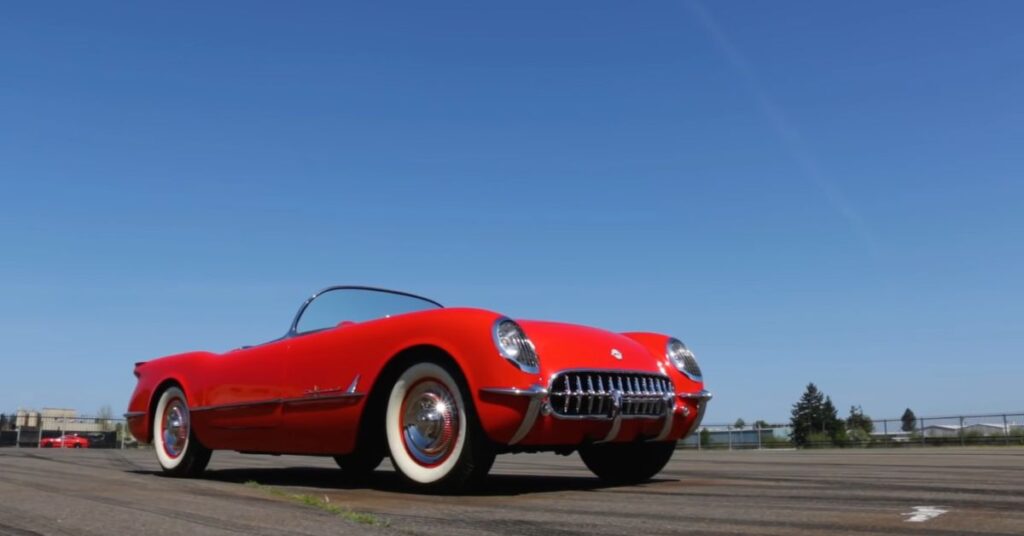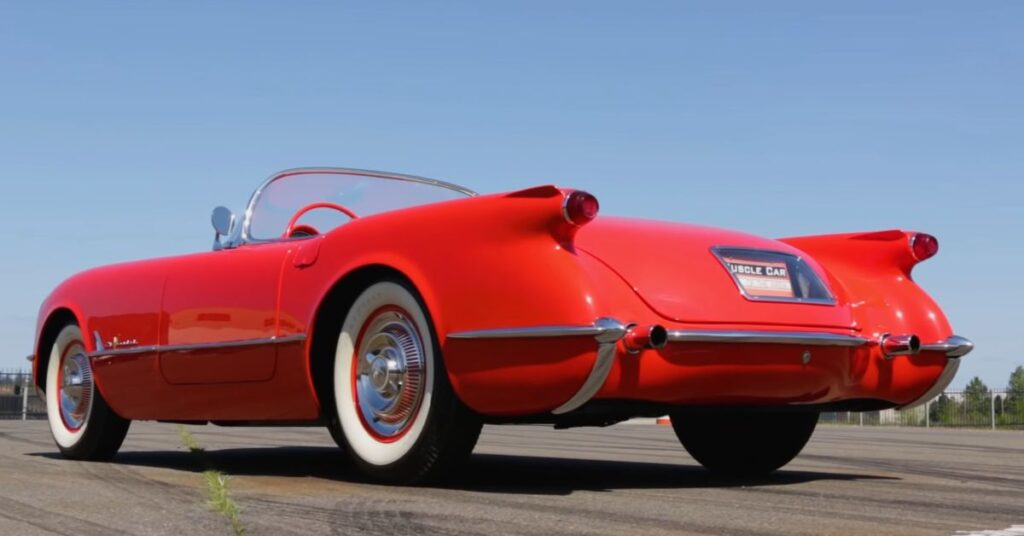In the world of classic American muscle cars, few models capture the essence of power and style like the 1955 Chevrolet Corvette. Episode 312 of “Muscle Car of the Week” takes us back to the early days of Corvette production when this iconic car underwent a significant transformation. From its underpowered beginnings to the introduction of the new small-block Chevy V8 engine, the 1955 Corvette marked a turning point for the legendary sports car. Let’s delve into the fascinating history of the 1955 Chevrolet Corvette and explore its notable features.
The Early Days of the Corvette
When the Corvette was first introduced, it was primarily known for its attractive design and innovative composite construction technology. However, its performance left much to be desired. Equipped with a straight-six engine and a less-than-impressive suspension system, the early Corvettes lacked the power and confidence-inspiring performance that muscle car enthusiasts craved.
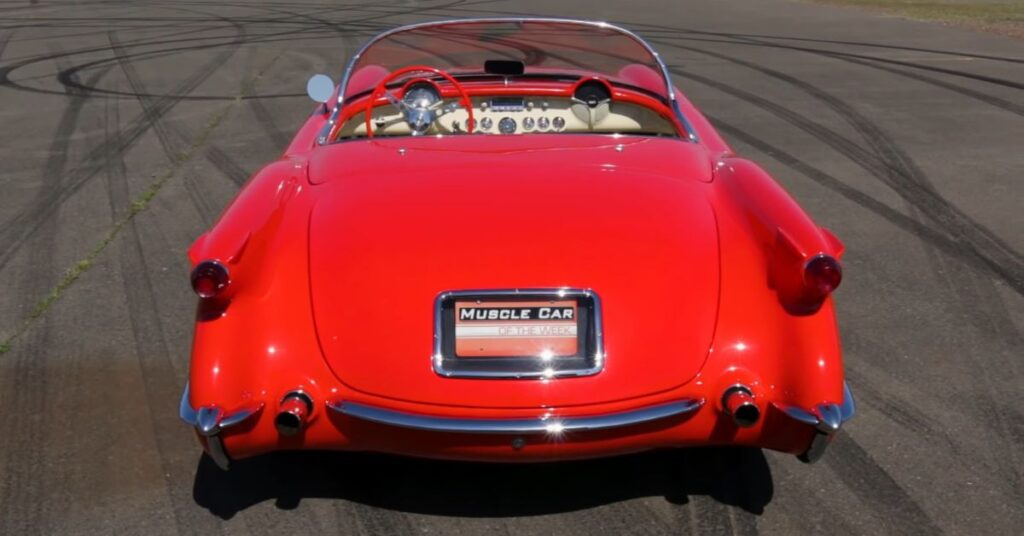
Recognizing the need for a boost in performance, Chevrolet engineers decided to make a significant change for the 1955 model year. They replaced the straight-six engine with the new small-block Chevy V8 engine, giving the Corvette the power it needed to compete with Ford’s Thunderbirds.
The Birth of the Small-Block Chevy V8
The introduction of the small-block Chevy V8 engine in the 1955 Corvette marked a milestone in automotive history. The 265 cubic-inch overhead valve V8 engine became one of the most popular V8 engines ever produced. Its favorable bore-to-stroke ratio and advanced design allowed it to outpace the previous six-cylinder engine, providing a significant performance improvement.
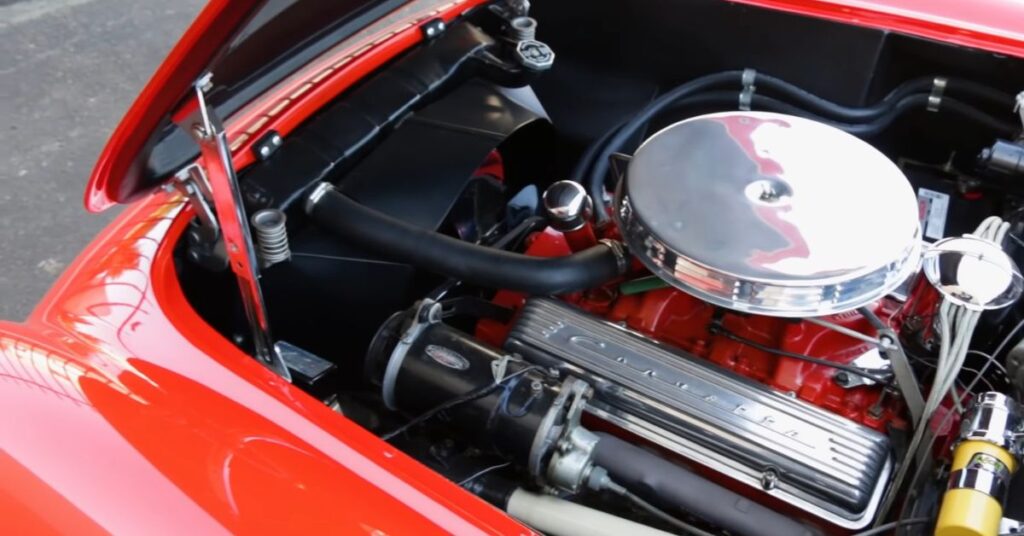
The base version of the 1955 Corvette’s small-block Chevy V8 engine developed 160 horsepower. However, Corvettes received a more powerful Rochester 4-barrel carburetor and a special camshaft, pushing the horsepower to an impressive 195. Finally, the Corvette had the guts under the hood to match its sleek exterior, transforming it from a mere pretty poser into a true American sports car.
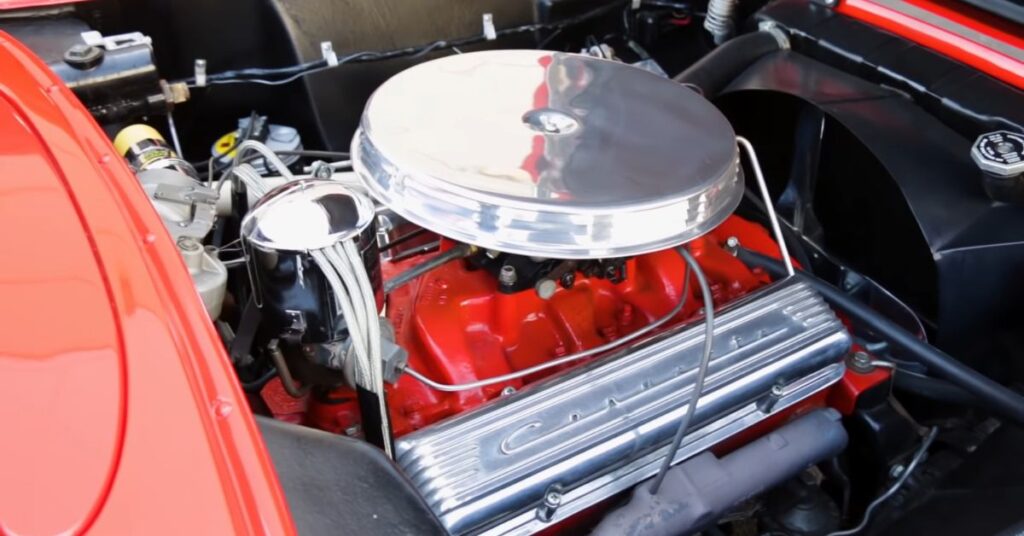
One subtle design feature exclusive to the 1955 Corvette was the prominent gold “V” on the front grille. If you spotted this distinctive emblem, you knew you were in for a race against a powerful new V8 roadster. The introduction of the small-block Chevy V8 engine shaved an impressive 2.4 seconds off the six-cylinder Corvette’s zero-to-60 time, setting the stage for high-performance models to come.
Notable Features and Improvements
While the 1955 Corvette’s small-block Chevy V8 engine brought newfound power, it also had its share of issues. Stress cracks and piston problems were reported, highlighting the need for further refinement. Additionally, the engine was initially designed without an oil filter, which meant frequent oil changes were necessary. However, these shortcomings were addressed and resolved in subsequent versions.
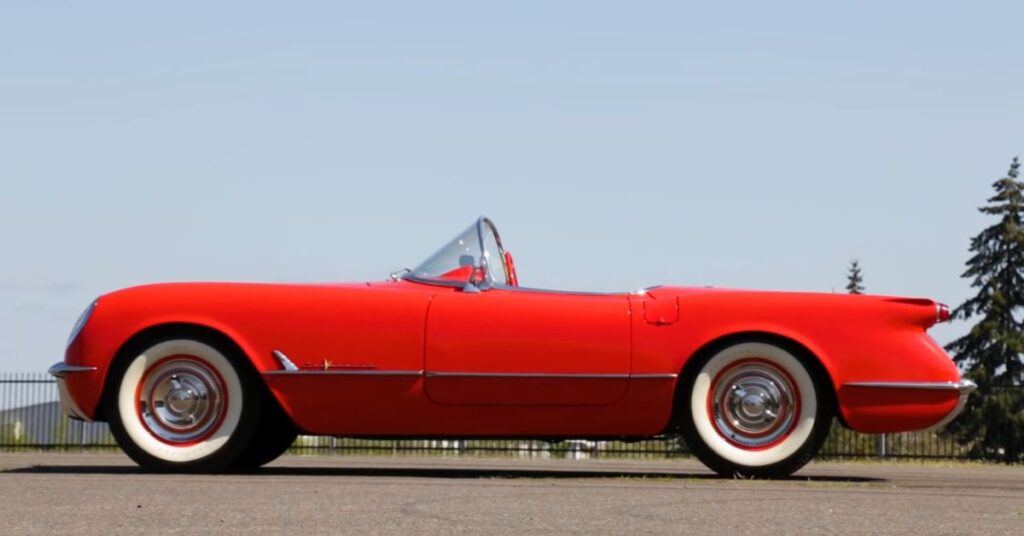
The 1955 Corvette was the first year to offer a close-ratio three-speed manual transmission as standard, providing a more engaging driving experience. Additionally, a two-speed Powerglide automatic transmission was available as an option for those who preferred an easier ride.
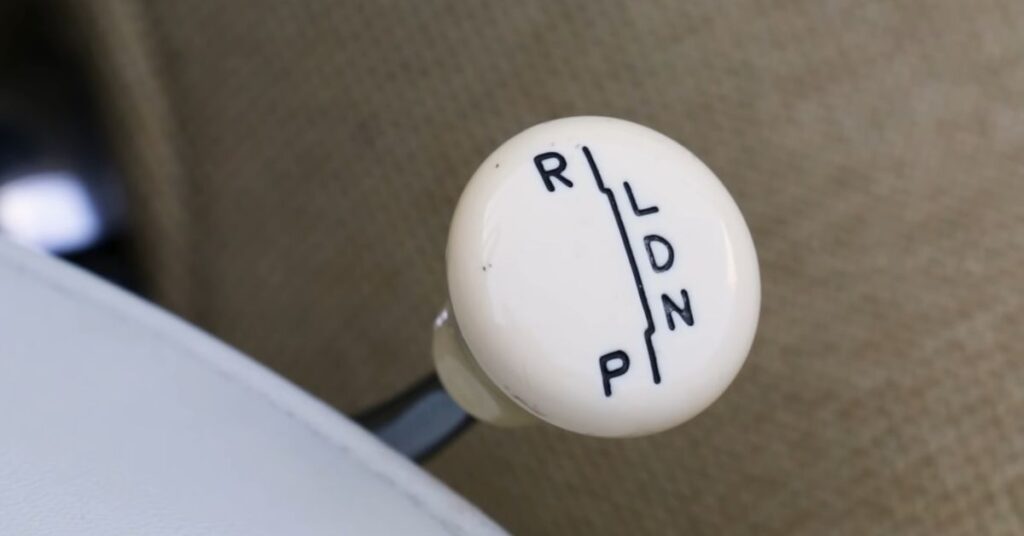
While the powertrain received a significant upgrade, suspension improvements for the 1955 Corvette were less pronounced. The car still relied on the same basic design as the previous model years, leading to less-than-stellar handling. However, this would soon change with the involvement of racer and engineer Zora Arkus-Duntov, who played a crucial role in enhancing the Corvette’s power and road-holding capabilities.
Exterior
The 1955 Chevrolet Corvette boasts a head-turning exterior that embodies classic American automotive design. Its sleek and aerodynamic silhouette exudes a sense of speed and elegance. From its prominent front grille adorned with a gold “V” emblem to the race-inspired mesh headlight guards, every detail is meticulously crafted to captivate onlookers. The vibrant Gypsy Red paint finish complements the chrome accents and white wall tires, adding a touch of sophistication to this iconic sports car.
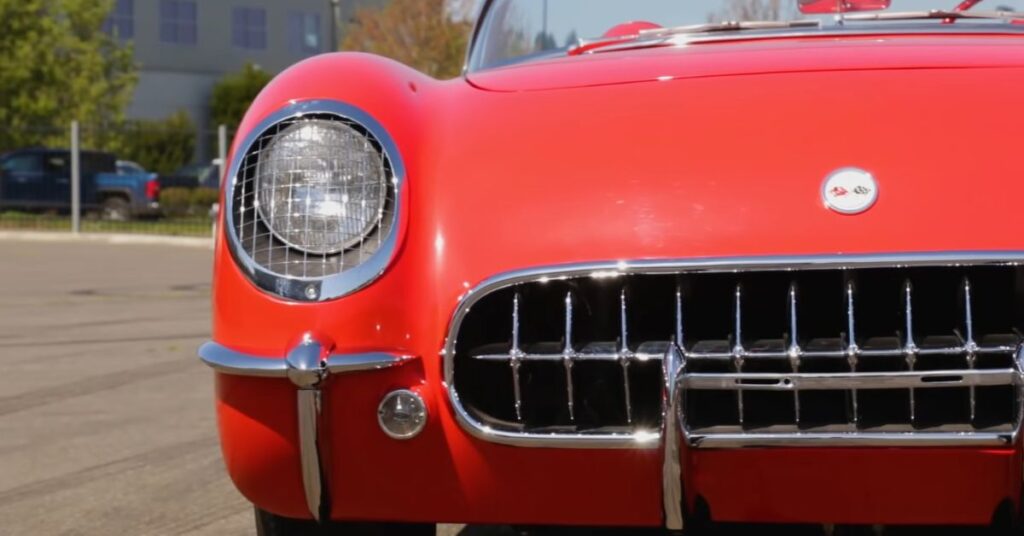
At the rear, the 1955 Corvette showcases a timeless appeal with its distinctive tail fins and simple yet stylish taillights. The rear license plate greenhouse adds a unique touch, further accentuating the car’s overall aesthetic. The chrome bumpers, wispy and sleek, enhance the Corvette’s allure, while the dual exhaust tips peering through the rear bumper hint at the power that lies beneath the hood. From every angle, this car exudes an air of exclusivity and excitement.

The Corvette’s exterior design embodies a harmonious blend of form and function. The smooth lines and flowing curves not only enhance its visual appeal but also contribute to its aerodynamic performance. From the toothy grin of the front grille to the subtly integrated front and rear fenders, every element is meticulously designed to minimize drag and maximize efficiency. The result is a car that not only looks stunning but also cuts through the air with ease, delivering a thrilling driving experience.
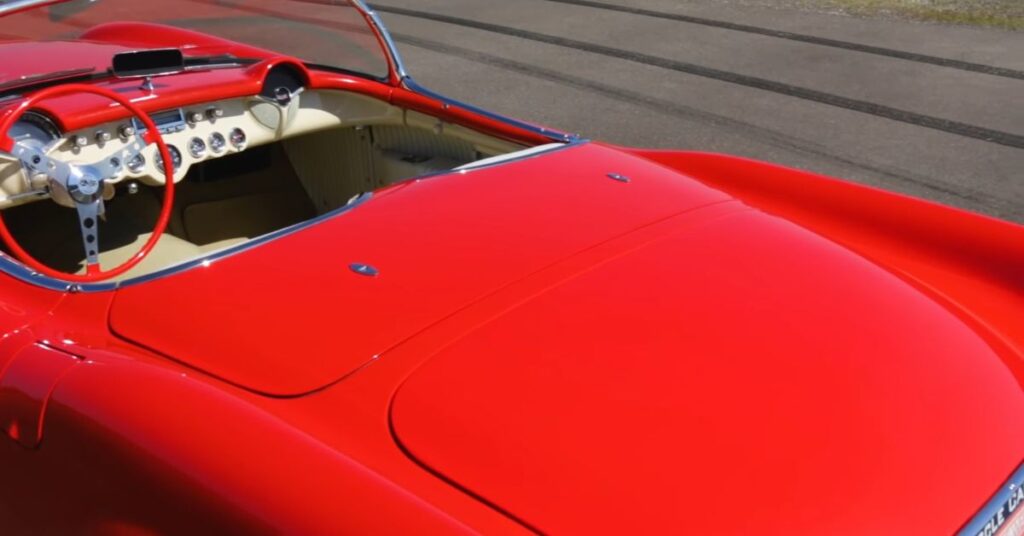
The attention to detail in the 1955 Corvette’s exterior design extends to its thoughtful features. The inclusion of tubeless tires, a first for the Corvette, not only enhances safety but also adds a touch of modernity to the overall design. The mesh headlight guards not only protect the headlights but also add a touch of aggression to the front fascia. The clean and uncluttered rear design, with its simple yet impactful taillights and chrome accents, is a testament to the car’s timeless elegance. In summary, the exterior of the 1955 Chevrolet Corvette is a testament to the ingenuity and artistry of American automotive design, capturing the hearts of enthusiasts for generations to come.
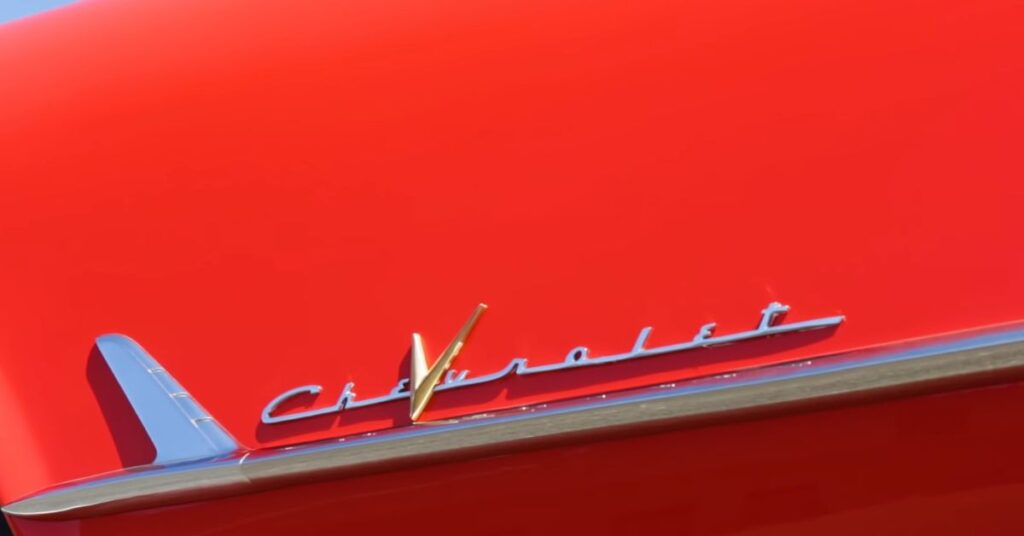
Interior Elegance
Stepping inside the 1955 Chevrolet Corvette, you’ll be greeted by an interior that exudes a perfect balance of simplicity and elegance. The cabin features a clean and uncluttered design, with a focus on functionality and style. The dashboard is neatly organized, with centrally positioned gauges and controls that are within easy reach of the driver. The use of high-quality materials, such as chrome accents and fine upholstery, adds a touch of luxury to the overall ambiance. Whether you’re cruising down the highway or taking a spirited drive, the interior of the 1955 Corvette creates an immersive and comfortable environment.
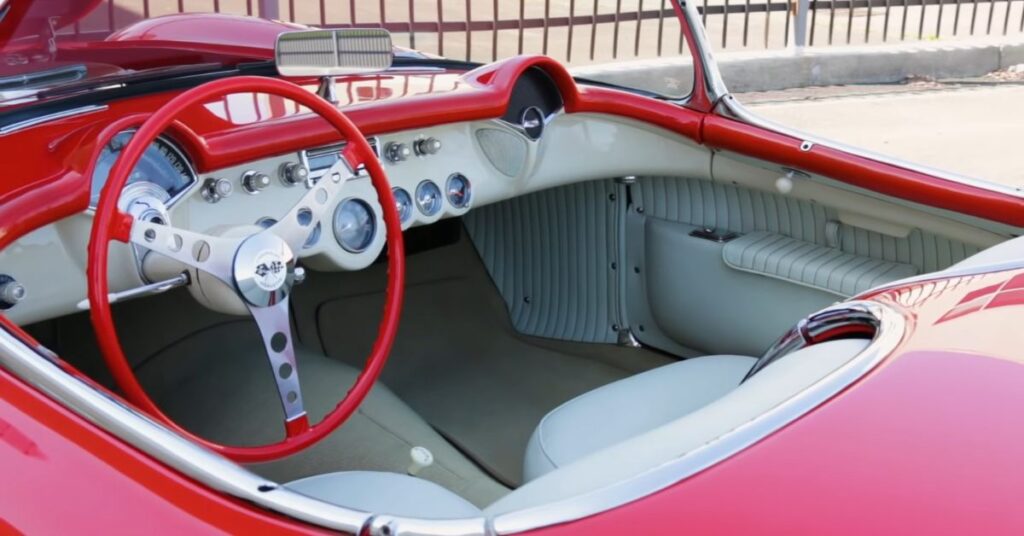
The seating in the 1955 Corvette is designed to provide a blend of comfort and support. The seats feature a sleek and sculpted design, hugging the occupants and keeping them firmly in place during spirited driving. While the emphasis is on aesthetics and style, the seats still offer a satisfactory level of comfort for shorter journeys. The interior design of the Corvette is focused on creating a sense of sportiness and a connection between the driver and the car, making it an exhilarating experience every time you take a seat.
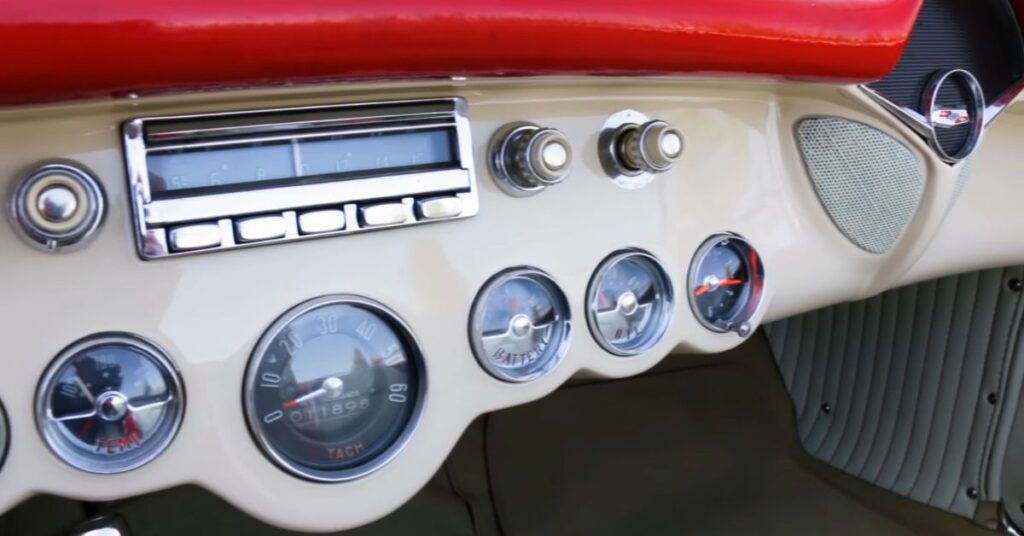
The attention to detail in the interior of the 1955 Corvette is evident in the placement of controls and instrumentation. The dashboard is designed to be driver-centric, with gauges and controls thoughtfully positioned for easy visibility and accessibility. The large steering wheel, offsetting the manual shifter in manual transmission models, adds to the overall sporty feel of the interior. The center console houses essential functions such as the radio and additional controls, all within arm’s reach, ensuring a seamless driving experience.
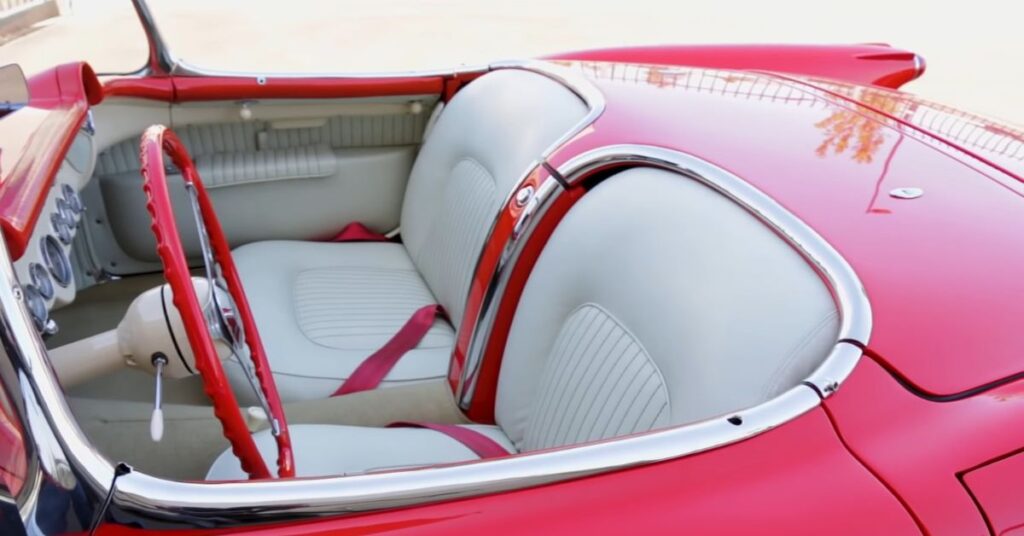
While the focus of the interior is on performance and style, there are also subtle touches that add to the overall charm of the 1955 Corvette. The iconic 6000 RPM tachometer takes center stage on the dashboard, providing the driver with essential information about engine performance. The interior ambiance is further enhanced by unique details like the unusual rev counter meter below the tachometer, adding a touch of character to the instrumentation. In summary, the interior of the 1955 Chevrolet Corvette combines functionality, style, and a driver-focused design, creating an environment that immerses you in the thrill of the open road while offering a touch of refined luxury.
Conclusion
The 1955 Chevrolet Corvette stands as a testament to the evolution of American muscle cars. From its underpowered beginnings to the introduction of the small-block Chevy V8 engine, this year’s model marked a turning point in the Corvette’s performance and reputation. While it had its fair share of shortcomings, the 1955 Corvette’s iconic design, combined with the newfound power under the hood, laid the foundation for the high-performance future that awaited the Corvette.
